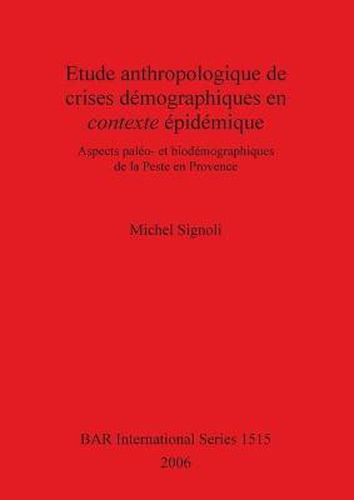Readings Newsletter
Become a Readings Member to make your shopping experience even easier.
Sign in or sign up for free!
You’re not far away from qualifying for FREE standard shipping within Australia
You’ve qualified for FREE standard shipping within Australia
The cart is loading…






This title is printed to order. This book may have been self-published. If so, we cannot guarantee the quality of the content. In the main most books will have gone through the editing process however some may not. We therefore suggest that you be aware of this before ordering this book. If in doubt check either the author or publisher’s details as we are unable to accept any returns unless they are faulty. Please contact us if you have any questions.
This study examines demographical impacts of plague epidemics on populations. Geographically, the work is confined to les Bouches-du-Rhone (southern France) and chronologically it stretches to modern times. The original approach of this work consists of the analysis of two sources; historical and biological archives. The former looks at various documents (fiscal lists, parish registers, lists of victims, etc.). The second source looks at the osteological remains of the plague victims, as retrieved from archaological excavations. The book concentrates on the bio-demographical impacts of plague epidemics of 1720-1722 in the communities of d'Aubagne, de Martigues, and Marseille. Three cemeteries were examined - Fedons, Delos and the trench at Observance. Itwas possible to define the rates of mortality and differences and variations among victims of different age groups. It was possible to compare the impact of the demographic crisis of two different origins: between the famine and epidemics (Martigues 1709-1710, 1720-1721) and different types of epidemics. It was also possible to understand types of inhumations and the treatment of plague victims, which were then compared to the archive lists and autopsies.
$9.00 standard shipping within Australia
FREE standard shipping within Australia for orders over $100.00
Express & International shipping calculated at checkout
This title is printed to order. This book may have been self-published. If so, we cannot guarantee the quality of the content. In the main most books will have gone through the editing process however some may not. We therefore suggest that you be aware of this before ordering this book. If in doubt check either the author or publisher’s details as we are unable to accept any returns unless they are faulty. Please contact us if you have any questions.
This study examines demographical impacts of plague epidemics on populations. Geographically, the work is confined to les Bouches-du-Rhone (southern France) and chronologically it stretches to modern times. The original approach of this work consists of the analysis of two sources; historical and biological archives. The former looks at various documents (fiscal lists, parish registers, lists of victims, etc.). The second source looks at the osteological remains of the plague victims, as retrieved from archaological excavations. The book concentrates on the bio-demographical impacts of plague epidemics of 1720-1722 in the communities of d'Aubagne, de Martigues, and Marseille. Three cemeteries were examined - Fedons, Delos and the trench at Observance. Itwas possible to define the rates of mortality and differences and variations among victims of different age groups. It was possible to compare the impact of the demographic crisis of two different origins: between the famine and epidemics (Martigues 1709-1710, 1720-1721) and different types of epidemics. It was also possible to understand types of inhumations and the treatment of plague victims, which were then compared to the archive lists and autopsies.